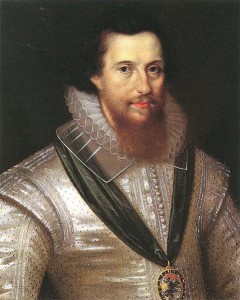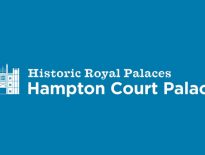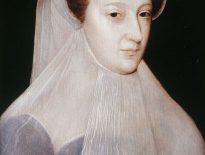 On this day in history, 28th September 1599, Robert Devereux, 2nd Earl of Essex, strode into Queen Elizabeth I's bedchamber unannounced and saw the Queen without her makeup or wig, without her "mask of youth".
On this day in history, 28th September 1599, Robert Devereux, 2nd Earl of Essex, strode into Queen Elizabeth I's bedchamber unannounced and saw the Queen without her makeup or wig, without her "mask of youth".
Essex had been confirmed as Lord Lieutenant of Ireland on 30th December 1598 and he left England on 27th March 1599, arriving in Dublin on 14 April. His campaign against the Irish was unsuccessful. Essex had assumed that he'd be able to defeat the Earl of Tyrone and his men quickly, but as things dragged on he became disillusioned with the situation. Exhaustion, disillusionment and a fear that his enemies at court were undermining him and influencing the queen against him, led to him giving up on the Irish situation, making a truce with the Irish rebel leader (against the queen's wishes) and returning to England without the queen's permission. This amounted to desertion and disobedience, something which Elizabeth I could not and would not tolerate
Devereux rushed back to court at Nonsuch Palace to offer an explanation but ended up making things worse when he strode into the queen's bedchamber unannounced while she was getting ready:
"His lordship lighted at the court gate about ten in the morning, and made all haste up to the presence and so to the privy-chamber, and did not stop till he came to the queen's bed-chamber, where he found her majesty newly up, and the hair about her face. He kneel'd to her, and kiss'd her hands, and had private speech with her, which seemed to give him great contentment; for coming from her to go to shift himself in his chamber, he was very pleasant, and thanked God, that tho he had suffered much trouble and storms abroad, he found a sweet calm at home."
However, "it was much wonder'd at in the court, that he went so boldly to her majesty's presence, she not being ready, and he so full of dirt and mire, that his very face was full of it." He had two further meetings with the queen and in the final one Elizabeth pressed him to explain himself. Essex's biographer Paul E. J. Hammer writes that this was the last time the queen saw her favourite. The next day, 29th September, Essex was interrogated before the queen's council for around 5 hours and the council concluded that his truce with the Irish rebels was indefensible and that his return to England was a desertion of duty. Essex was then put under house arrest at York House.
In June 1600, Essex appeared before a special court and was punished by being deprived of his public office and being confined to his home. However, in August, he was granted his freedom, although his sweet wines monopoly, his one source of income, was not renewed.
He may well have wormed his way back into the queen's affections if he had apologised and appealed to the queen for mercy, after all, she had a soft spot for him and was used to his impulsive behaviour, but Essex made the fatal mistake of trying to enlist the support of the Scottish king, James VI, against Cecil's faction at court and planning a coup for March 1601 to seize control of the court, the Tower of London and the City, and then to remove his enemies from power. When, on the 7th February, Essex received a message from the queen that he was to present himself before her council, he decided to move things forward and summoned three hundred followers, telling them that Cecil and Raleigh were planning to assassinate him and that the rising should, therefore, take place the next day, instead of in March.
On the 8th February 1601, Essex, his supporters and two hundred soldiers gathered at Essex House. Essex then marched into the city crying "For the Queen! For the Queen! The crown of England is sold to the Spaniard! A plot is laid for my life!" but London's citizens remained indoors instead of joining him on his march. As his supporters deserted him, Essex was forced to give up and return home, where he surrendered after Lord Admiral Nottingham threatened to blow up his house if he did not give himself up.
Essex was tried for high treason on 19th February 1601 and condemned to death. He was executed on 25th February 1601 on Tower Green.
Also on this day in history, on 28th September 1553, Mary I travelled in a decorated barge to the Tower of London to prepare for her coronation - click here to read more.
Notes and Sources
- ed. Birch, Thomas (1754) Memoirs of the Reign of Queen Elizabeth: From the Year 1581 Till Her Death. In which the Secret Intrigues of her Court, and the Conduct of her Favourite, Robert Earl of Essex, both at Home and Abroad, are particularly illustrated. From the original papers of his intimate friend, Anthony Bacon, Esquire, and other manuscripts never before published., Volume II, A. Millar, p. 434. Read at https://archive.org/stream/memoirsreignque00bircgoog#page/n441/mode/2up
- The Execution of Robert Devereux, 2nd Earl of Essex, Claire Ridgway, 25 February 2010, The Elizabeth Files.
- Hammer, Paul E. J.. “Devereux, Robert, second earl of Essex (1565–1601).” Paul E. J. Hammer In Oxford Dictionary of National Biography, edited by H. C. G. Matthew and Brian Harrison. Oxford: OUP, 2004.



Queen Elizabeth could ” perhaps ” have forgiven Essex if he had not seen her without wig ,makeup ect …….when a woman however brilliant as Elizabeth was ……falls in love with a man many years her junior …..means that what offended her the most was that he saw her as an old woman!
Yes, perhaps so.
Elizabeth was ill advised over Ireland. Essex was there, bogged down, and I mean really bogged down, surrounded and lost in the mist, his men being picked off from behind him, and she had no idea about conditions in Ireland. His truce with Hugh O’Neill was the wisest thing to do. There is some speculation that he wrote to Elizabeth for help and for permission to come home and attend to his men, who were dying and who had ill, and wounded but that she didn’t respond or receive the letters. He didn’t receive some of her letters either. Thus he came home.
I can just imagine the scene, the Queen in bed, the poor ageing woman with her wig off and teeth that are bad, her dignity and privacy invaded by a soldier running into her bedroom and demanding to be heard. It’s like when the present Queen woke up to find an intruder in her own bedroom, scary and she must have been horrified. Essex had gone down the wrong road by coming into the presence of Elizabeth and he was shocked to see her as she truly was, an old lady. She probably never forgave him, but Essex had worse problems to face.
His whole conduct in Ireland was seen as desertion and cowardice. Having faced a harsh tribunal and imprisonment on this his own dignity was insulted. He was of an old and noble house and to Essex, Elizabeth was an upstart. He was her toy boy and she treated him like one. She may have shown him too much affection but he got ideas above his station. Essex wanted Elizabeth and he wanted power, to rule her. She often dismissed him. Now he raised an army, well a small force against her and marched on her capital and palace. He was armed as were the men with him and fire was exchanged. He hoped to incite the people but they broke into a wine cellar and that was the end of his rebellion. Essex would be captured, surrounded, disarmed, arrested and tried for treason and executed. I don’t think Elizabeth could have forgiven Essex for treason, even if she forgave his behaviour in her palace.
There is a story, made famous in Elizabeth and Essex, although I believe it was also in literature, but I don’t know it’s origin or truth. The story is that Essex and Elizabeth were getting close and showed that they were lovers but Elizabeth was nervous about his ambitions and that his enemies would come between them. One evening Elizabeth gave Essex a ring. This ring she said belonged to her father. Elizabeth said Henry had told her that if ever he was angry with her she should return the ring and he would forgive her. If Essex was in trouble he was to do the same. The story continued about Essex and his rebellion and his marriage to another woman who was jealous of Elizabeth. When he was arrested he tried to send the ring via his wife but the Countess didn’t take it to the Queen. The film has a spin on this tale with Penelope who loves him confessing to stealing their letters and Essex not returning the ring. Elizabeth, in the Tower on the night before his execution, in the film sends for Essex and begs him as to why he didn’t send the ring. A few home truths are exchanged and Essex goes to his death, dignity in tact, leaving a grief stricken Essex behind.
The problem with Essex was that he misread Elizabeth. He wanted to be her equal and she would share power with no man.
As we can “read” the secret (hidden by Cyphr codes) texts of ‘Shakespeare’ (=Francis Bacon, grown up in the family of ‘Nicholas Bacon’), we know that as himself, a son of Elisabeth and Robert Dudley, his brother Robert Devereux (grown up in the family of Walter Devereux, Lord of essex) is a son of Elisabeth I and Robert Dudley.
The whole story is quite complicated… 😉
If true the relationship between the 2 was untenable. The queen was a solitary ruler and could not share her throne.